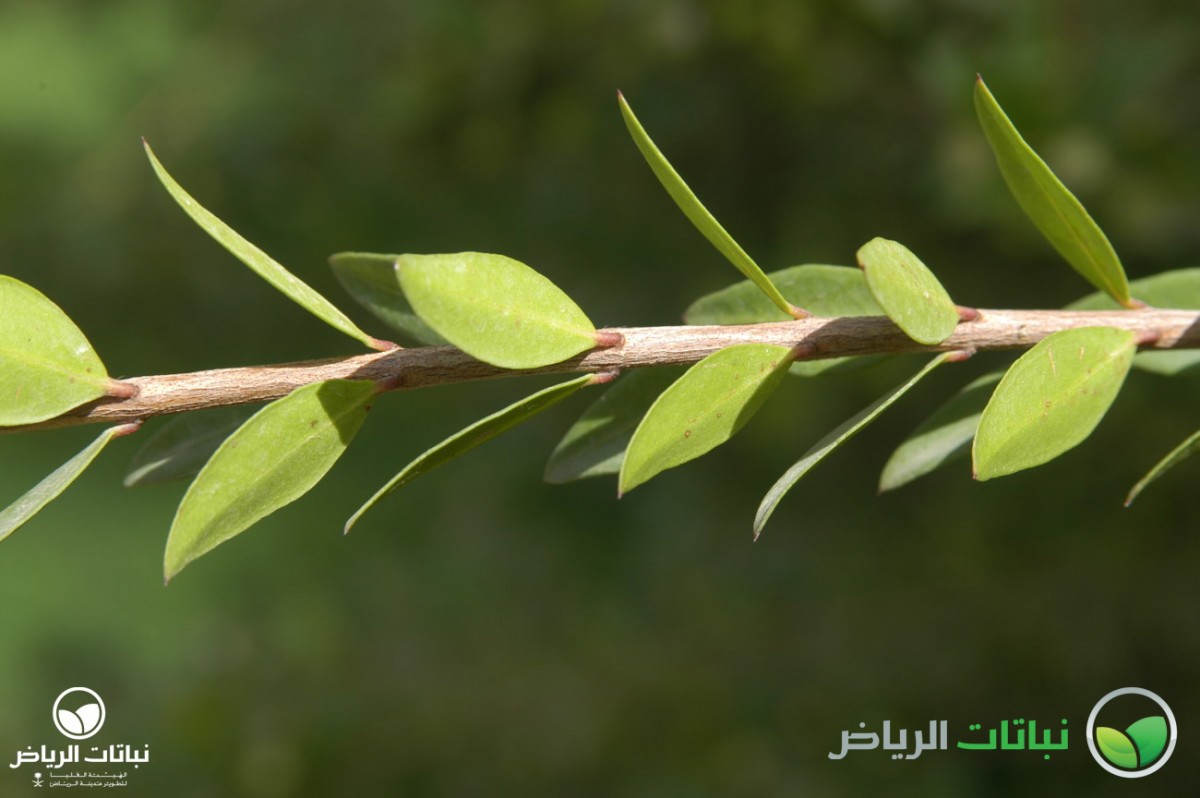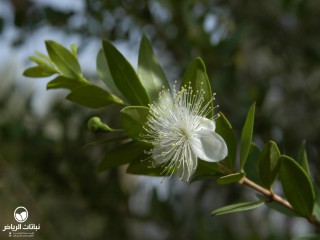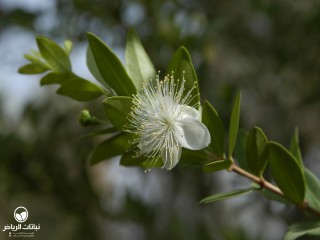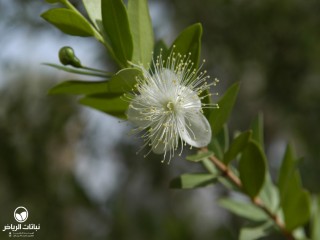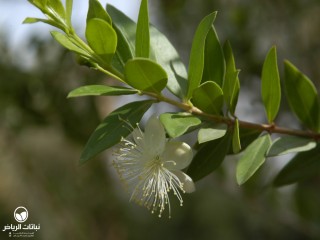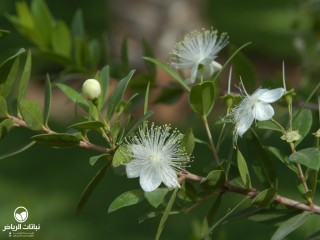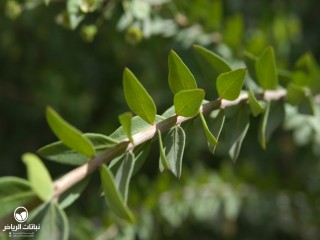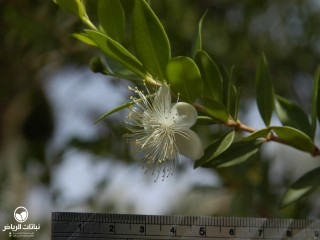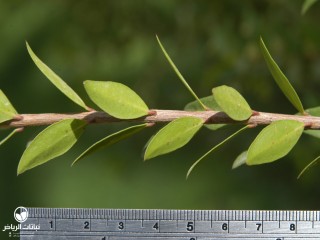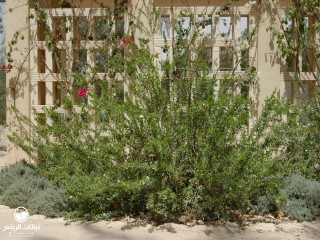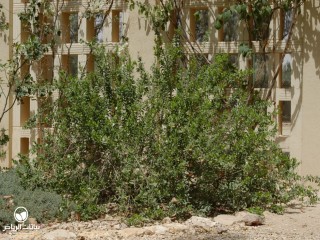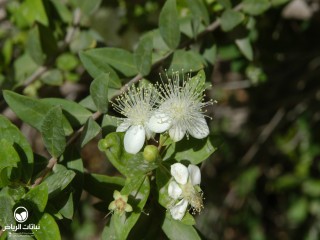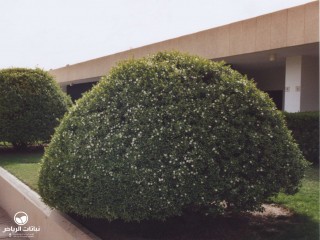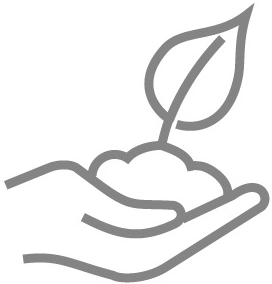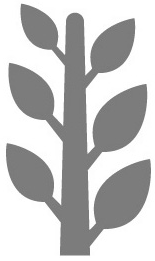Riyadh Plants
Greek Myrtle
Myrtus is also called the Greek Myrtle; in Arabic, it is known as ass or hinbleiss. The Greek word ‘myron’ means balsam or odorous sap. It is a shrub of Mediterranean origin. The area of distribution reaches from the Canary Islands and the Mediterranean basin to southwest Asia. Often seen in Arriyadh as a hedge, the Myrtle reaches a height between 1 and 5 metres and a spread of between 3 and 4 metres. The shrub is often multi-branched and round in shape. The foliage is evergreen; the leaves are dark green, small and lanceolate. The blossom appears in summer and the beautiful white single flowers have attractive filaments. The flowers have an appealing scent and even the leaves have a good spicy flavour when they are rubbed. After flowering, the shrub develops, dark-blue berries. Maintenance with moderate pruning is advisable. The Myrtle is resistant to urban microclimates, and can be used as screen and shelter plant. It is suitable for pedestrian precincts, public open space and urban areas, and even for small managed roof gardens and as a topiary plant. The original distribution in the Mediterranean climate should again be considered, which means that the Myrtle loves sunny locations, but with sufficient air-humidity and irrigation. It is vulnerable in the case of desiccation and high salinity. The soil should be penetrable and rocky, but not limey. Myrtles can be used as specimen trees or dominant plants, as well as hedges. Myrtles will provide appealing compositions in rock or steppe garden themes.
